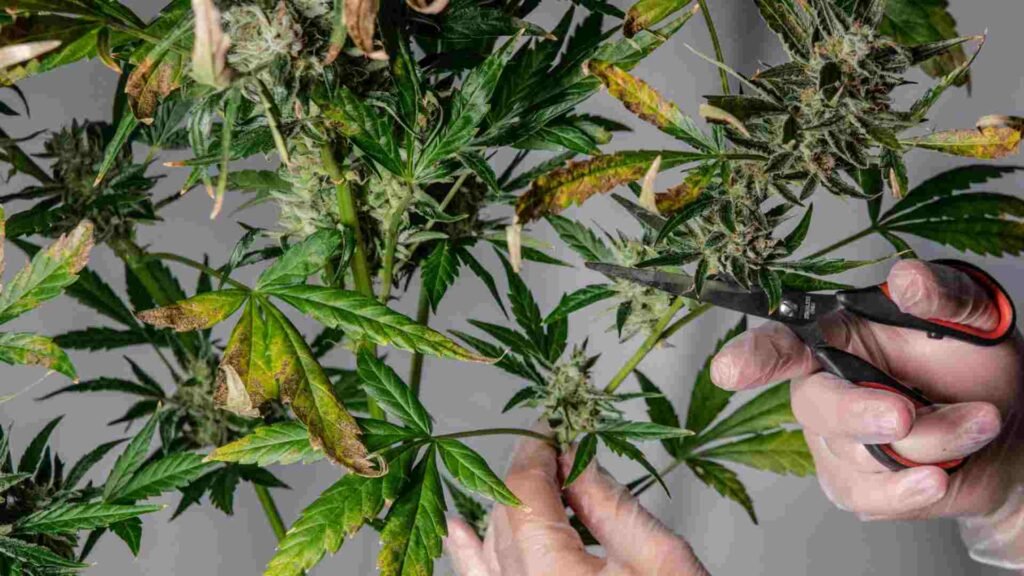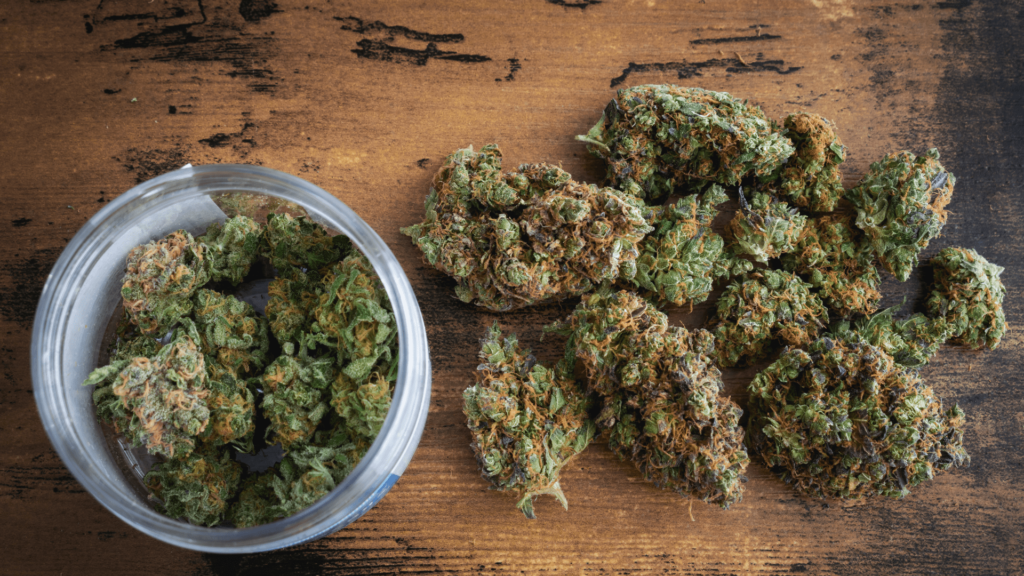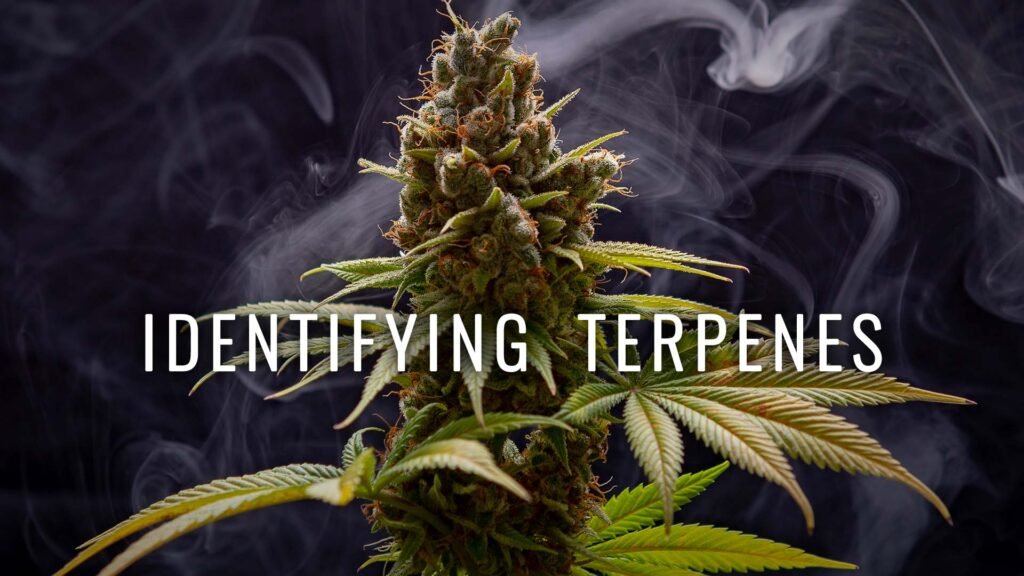Hybrid strains have become a staple in the DC cannabis industry, offering users unique combinations of effects and flavors. The ability to mix and match genetics has resulted in an endless variety of hybrid strains that cater to every preference.
From sativa-dominant hybrids that offer an energizing high to Indica-dominant hybrids that provide a relaxing buzz, there is something for everyone in Washington DC dispensary. But given the variety of alternatives, it’s crucial to comprehend the science behind hybrid strains.
Genetics and breeding methods are vital in determining each strain’s effects. Knowing this information as a customer can assist you in selecting the hybrid strain that will best meet your needs.
The Basics of Genetics
Genetics is the foundation for creating hybrid strains.
How dominant and recessive genes work is essential when breeding cannabis plants?
Dominant genes are expressed over recessive genes, while recessive genes manifest themselves when paired with another gene. Regarding cannabis genetics, dominant genes typically determine plant structure and flowering time.
Recessive genes often determine factors like flavor profile and potency levels. Breeders use this knowledge to create hybrid strains that express desired traits from both parent plants.
Understanding Cannabinoids
The effects of a strain are determined mainly by its cannabinoid profile. THC is the most well-known cannabinoid due to its psychoactive properties, but CBD and other cannabinoids also play essential roles in shaping a strain’s effects. Different ratios of cannabinoids can produce vastly different results.
For instance, the terpene limonene, which is typically found in citrus fruits, has an energizing impact when added to cannabis strains. On the other hand, myrcene is a very calming compound that is frequently present in indica-dominant strains.
Terpenes: The Hidden Gems
Terpenes are aromatic oils found in cannabis plants that work with cannabinoids to produce unique effects. These compounds are responsible for a strain’s characteristic aroma and taste. Terpenes also play a role in shaping a strain’s effects.
For example, limonene is a terpene commonly found in citrus fruits that produces an energizing effect when present in cannabis strains. Myrcene, on the other hand, is highly soothing and often found in indica-dominant strains.
Breeders carefully select parent plants based on their terpene profiles to create hybrid strains with the desired flavor and effects. Understanding the science behind hybrid strains is essential for anyone looking to enjoy cannabis responsibly. Determined by genetics, cannabinoids, and terpenes, a strain’s effects are crucial. You can choose the strains that best fit your needs by being aware about what you’re ingesting and how it was made.
The Basics of Genetics
Genetics is the foundation of hybrid weed strains. Fundamentally, the strength, scent, and flavor profile of a particular strain are all determined by its genetic makeup. Dominant and recessive genes are the two main categories of cannabis genetics. Genes that are dominant are expressed more strongly than genes that are recessive.
For instance, if one plant has a dominant gene that produces high levels of THC and another has a recessive gene that produces low levels of THC, the resulting hybrid will probably have higher levels of THC due to the dominant gene. Conversely, recessive genes might not even be expressed unless both parents carry that gene.
This means that even if both parents carry a recessive gene for high CBD levels in their genetic makeup, their offspring may not express it unless they inherit it from both parents. The science behind genetics plays an essential role in determining what effects different strains will have on consumers.
The chemical composition of each strain determines how it affects us mentally and physically. When breeders create new strains through hybridization techniques such as crossbreeding or genetic engineering, they use knowledge of dominant and recessive genes to predict how various traits will express themselves in the resulting plants.
Understanding genetics is critical when considering what cannabis strain to smoke or consume. Genetic factors dictate how plants grow and what compounds they produce; this information can help you identify which strains you enjoy most or which affects you desire most from your cannabis consumption experience.
Understanding Cannabinoids
Cannabinoids are the compounds found in cannabis plants that interact with our bodies’ endocannabinoid system. THC and CBD are the two most well-known cannabinoids, but cannabis plants also contain more than a hundred other cannabinoids.
The ratios of these cannabinoids can have a big impact on the overall benefits of a strain because each cannabinoid has a different impact on the body and mind. THC is the psychoactive cannabinoid that gives marijuana use its characteristically euphoric and intoxicated effects.
Contrarily, CBD is not psychotropic and has been shown to offer a wide range of medical advantages, including a reduction in seizures and anxiety. It’s crucial to remember, though, that both THC and CBD have therapeutic benefits and combine to create what is referred to as the “entourage effect.”
Overview of THC
Breeders must carefully take into account the THC content of each strain while developing hybrid strains. Strong psychoactive effects from high THC concentrations, such as profound euphoria or anxiety, may not be desired for all users.
On the other hand, strains with low levels of THC may not provide sufficient relief for medical conditions that require higher doses. It’s also important to note that different strains of cannabis have varying levels of THC due to their unique genetic makeup.
Due to their longer growing cycles and thinner leaves, Sativa strains have lower THC concentrations than Indica strains. Indica strains are high in THC due to their shorter growing cycles and broader leaves.
Overview of CBD
CBD has gained significant attention over recent years due to its potential medical benefits without psychoactive side effects caused by high levels of THC consumption. Breeders must create hybrid strains aiming for medicinal value (such as seizing disorders) to balance high CBD concentrations with lower amounts or no THC. CBD-dominant strains tend to have calming, anti-inflammatory effects that are ideal for medical use.
Other Cannabinoids
While THC and CBD are the most well-known cannabinoids, other cannabinoids, such as CBC, CBG, and CBN, also play essential roles in the overall effects of a strain. For example, CBC has been found to have anti-inflammatory properties, while CBG has been found to help with glaucoma. Breeders must consider these lesser-known cannabinoids when creating hybrid strains to achieve specific medicinal or recreational effects.
The Nose Knows: An Introduction to Terpenes
When it comes to cannabis in DC, many focus heavily on a strain’s THC and CBD content. But there’s a crucial component that often goes overlooked – terpenes.
Terpenes are the aromatic compounds found in cannabis that give each strain its unique scent and flavor profile. But their importance goes beyond just sensory experience – terpenes also play a significant role in the effects of a strain.
There are over 100 different terpenes found in cannabis, each with its distinct properties. For example, limonene is known for its citrusy aroma and is commonly found in sativa-dominant strains.
Pinene has a piney scent and is often found in India-dominant strains. These terpenes not only help define a strain’s flavor profile but also work together with cannabinoids like THC and CBD to create unique effects.
The Entourage Effect: How Terpenes and Cannabinoids Work Together
The combination of terpenes with cannabinoids like THC and CBD creates what’s known as the “entourage effect” – essentially meaning that these compounds work together synergistically to produce more potent effects than any single compound could achieve alone.
For example, myrcene is a common terpene found in many indica strains with sedative effects. When combined with THC, which has psychoactive properties, myrcene can enhance the soothing effects of the high.
Similarly, when combined with CBD, linalool is another common terpene with anxiety-reducing properties. By understanding how different combinations of cannabinoids and terpenes work together, cultivators can tailor their hybrid strains to produce specific desired effects for medical or recreational purposes.
It’s clear that these “hidden gems” in cannabis play a critical role in understanding and creating hybrid weed strains. So next time you choose a strain, don’t just focus on the THC and CBD content – pay attention to those terpenes as well.
Hybridization Techniques
Breeding has been used for centuries to create new and improved plant varieties, including weed strains. Traditional breeding methods involve selecting desirable traits from two or more parent plants and crossing them to produce a hybrid offspring with a combination of those traits. This process is repeated for several generations until the desired characteristics are stable in the resulting strain.
However, there are limitations to traditional breeding techniques when it comes to cannabis. For instance, some strains may have undesirable traits that cannot be easily bred from the plant.
Additionally, traditional breeding can take a long time and may only sometimes produce consistent results. Enter modern hybridization techniques such as genetic engineering and tissue culture.
While these methods are often controversial in the cannabis industry, they offer significant advantages over traditional breeding. Genetic engineering allows breeders to directly manipulate the plant’s DNA, resulting in precise changes to specific genes that control desired characteristics like potency or flavor profile.
Tissue culture involves growing cannabis cells in a laboratory setting, allowing breeders to select desirable traits earlier without waiting for full plant growth and development. While these methods may not be for everyone, they offer exciting possibilities for future developments in hybrid weed strains.
Overview of Traditional Breeding Methods Used to Create Hybrid Strains
Traditional breeding methods have been used for centuries by farmers and horticulturists worldwide with great success; however, creating hybrid weed strains is not that simple since it comes with unique challenges compared to other crops or plants. Regarding cannabis strains specifically, breeders must focus on finding two ideal parent plants whose genetics complement each other well enough so that when combined, their offspring will possess desirable characteristics through generations of selective cultivation.
This process can take years as breeders carefully assess each generation of offspring before selecting which ones will serve as parents for future generations of hybrids. It requires patience and persistence but is the only way to ensure consistent results.
Traditional breeding methods still play a vital role in hybrid weed strains, as even with modern technology, it is challenging to create new strains without understanding the basics of traditional breeding. Both conventional breeding and modern hybridization techniques have their advantages and disadvantages.
The cannabis industry constantly evolves with discoveries and technological advancements, so breeders must be open to experimenting with various approaches to creating high-quality hybrid weed strains. By balancing science and tradition, breeders can continue producing unique and potent cannabis strains that meet the ever-growing demands of cannabis consumers worldwide.
Balancing Effects: Sativa vs. Indica Dominant Hybrids
Regarding hybrid weed strains, there are two main categories: sativa and indica-dominant hybrids. Sativa strains are typically known for their energizing effects, providing a cerebral high perfect for daytime use. Indica strains, on the other hand, are renowned for their relaxing qualities, making them perfect for use at night or for persons who experience anxiety or tension.
While sativa-dominant hybrids have more uplifting effects associated with saliva’s, indica-dominant hybrids typically have more calming effects. Hybrid strains balance these effects by combining different sativa and Indica genetics ratios, creating unique strains that can provide a wide range of benefits.
How Breeders Balance the Effects to Create a Desired Outcome?
Finding the ideal balance between sativa and indica genetics is one of the most significant difficulties breeders encounter when producing hybrid strains. A thorough knowledge of genetics and the interactions between various genes is necessary for this.
Breeders use various techniques, such as backcrossing or crossbreeding, to create new hybrid strains that offer specific combinations of both sativa and indica characteristics. They aim to create a strain with a desirable balance between energizing and relaxing effects and other desirable traits, such as higher THC levels or unique flavors and aromas.
Ultimately, creating a balanced hybrid strain is both an art and a science. It involves careful experimentation, knowledge of genetics, patience in testing different combinations, and ultimately finding that sweet spot where both sativa and indica characteristics work together harmoniously to produce an ideal strain with unique qualities.
Niche Subtopics: Rarely Known Small Details
Let’s start with an important yet often overlooked subtopic on landrace strains. These strains are the purest form of cannabis worldwide, developed over centuries in limited geographical regions.
They are the foundation for all modern hybrid strains today. These strains have adapted to their natural environment and have unique characteristics like resilience to pests and diseases, faster growth cycles, and potent effects.
Unfortunately, these strains are becoming extinct due to the overwhelming popularity of hybrids. With their high THC content and distinct aroma flavors, hybrids offer growers more control over the final product and something new to market.
But we need to remember that landrace strains have a rich history and hold incredible value in preserving cannabis biodiversity. So, let’s take a moment to appreciate these underappreciated gems!
The Role of Phytochemicals in Cannabis Plants
Moving on to another fascinating subtopic- phytochemicals! These naturally occurring substances in plants are what give them their distinctive qualities, including aroma, taste, color, and therapeutic advantages. Cannabis plants contain numerous phytochemicals, including cannabinoids such as THC and CBD. While THC is mainly responsible for getting you high, other cannabinoids, such as CBD, offer therapeutic benefits without the psychoactive effects.
Additionally, terpenes play a key role in cannabis’ medicinal properties by enhancing its effects or adding new ones altogether. Breeders must consider not only THC content but also other phytochemicals when creating hybrids. This distinction separates good from great strains!
By blending different landrace strains breeders can create unique combinations. It enables the broader use of cannabis for a range of conditions. So, let’s appreciate the true potential of this plant and its phytochemicals!
History Of Hybridization in Cannabis
Let’s look into the rich history of hybridization in cannabis. Although hybrids are a relatively new invention in the world of cannabis. They have been around for centuries and have undergone an interesting evolution. Modern hybrid strains had their roots in the 1960s. When breeders started crossing Sativa and Indica strains to create unique combinations with varying effects.
People created these early hybrids by chance or through trial and error, but as technology advanced, so did hybridization techniques. Fast forward to today, where we have access to advanced methods. Like genetic engineering and tissue culture, which allow us to manipulate genes more precisely. It leading to even more unique and potent strains.
Some producers emphasize high THC levels at the expense of flavor and cannabinoid balance, which is a cause for concern. We must remember that while THC is a crucial component of any good strain, it isn’t everything!
Breeders must consider lineage, phytochemicals, and terpenes when crafting new hybrid strains. Only then can we truly appreciate the incredible diversity available within this versatile plant!
Conclusion
Hybrid strains of cannabis have taken the Washington DC Dispensaries by storm. Understanding the science behind them is crucial for both consumers and growers alike. Mastering genetics, cannabinoids, terpenes, and hybridization empowers breeders to craft precise strain effects for consumers.
It’s not just about getting high. Experience the diverse benefits of cannabis tailored to your needs.
While some may argue that traditional breeding methods are superior to modern techniques. Such as genetic engineering and tissue culture, I firmly believe that we should embrace innovation in all forms.
With new technologies emerging daily, we can explore even more possibilities when creating hybrid strains. Ultimately, the future of hybrid weed strains lies in our ability to balance their effects through careful breeding practices.
Sativa vs. Indica dominant hybrids offer different experiences based on their ratios of cannabinoids and terpenes. Balancing both hybrid types, whether you prefer cerebral or relaxing effects, helps create strains for diverse preferences.
Let’s celebrate cannabis hybrids by exploring new methods for unique strains. The possibilities are endless – who knows what exciting discoveries lie ahead?






